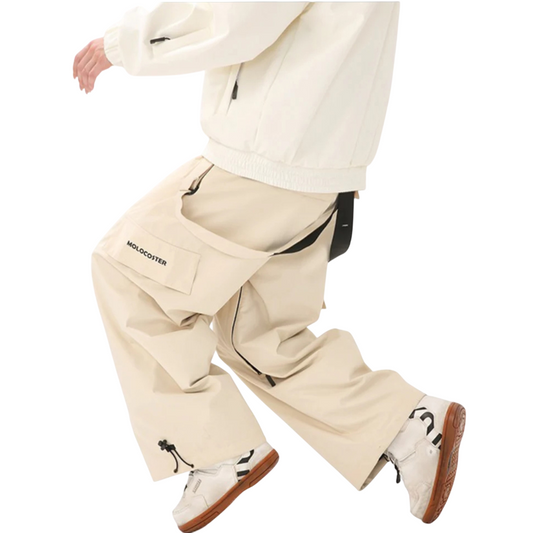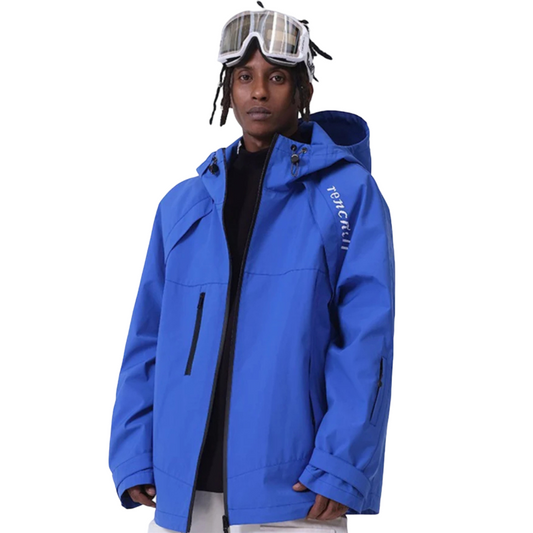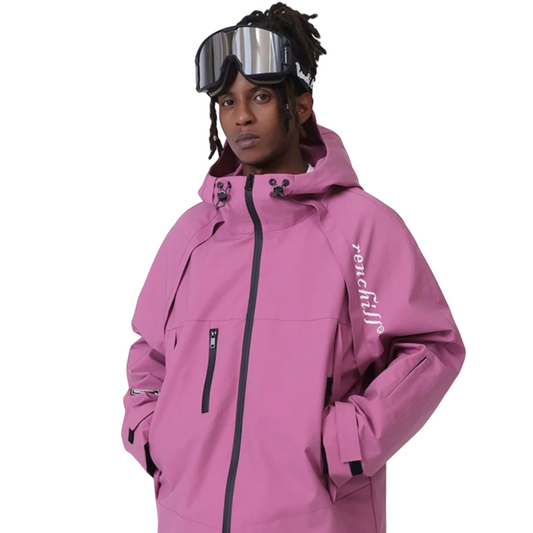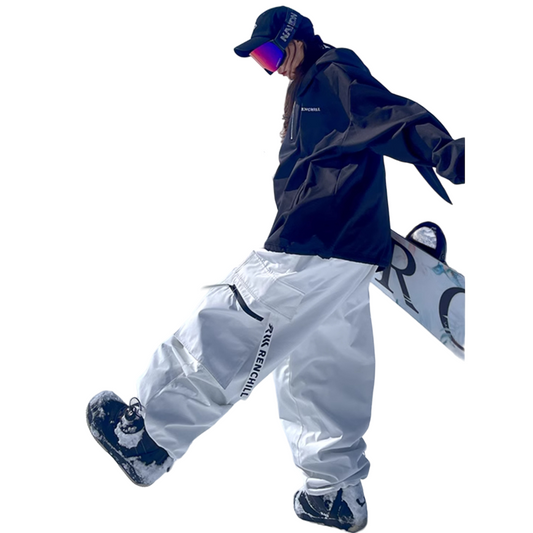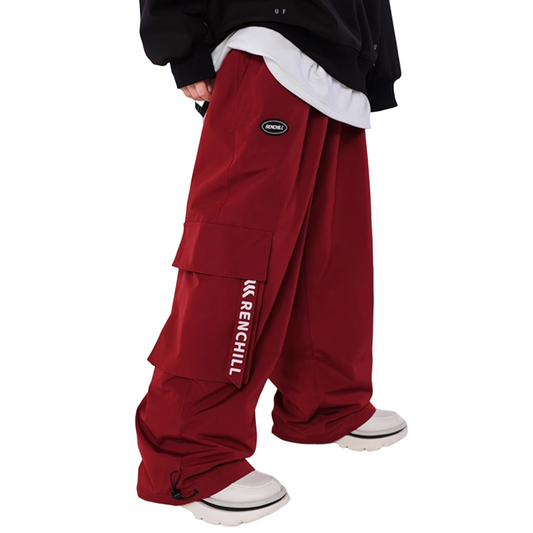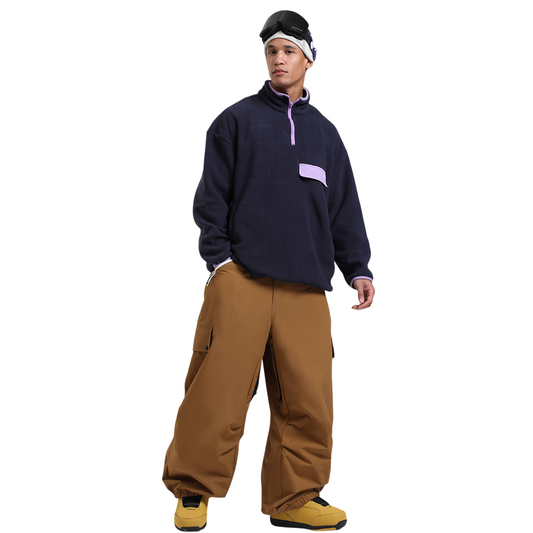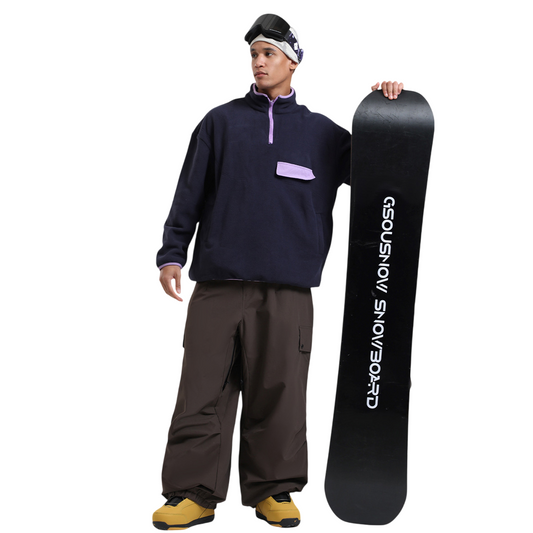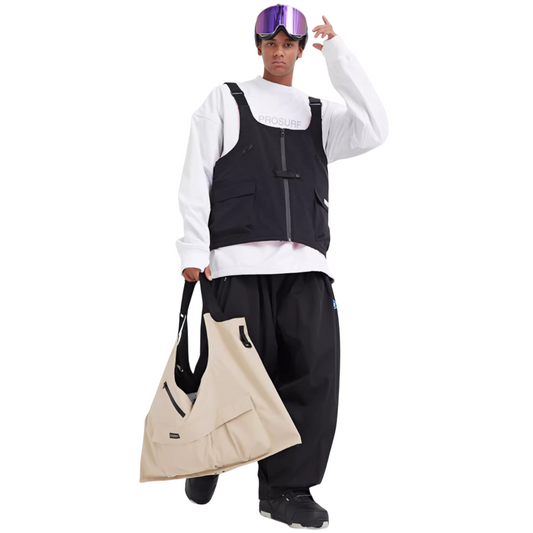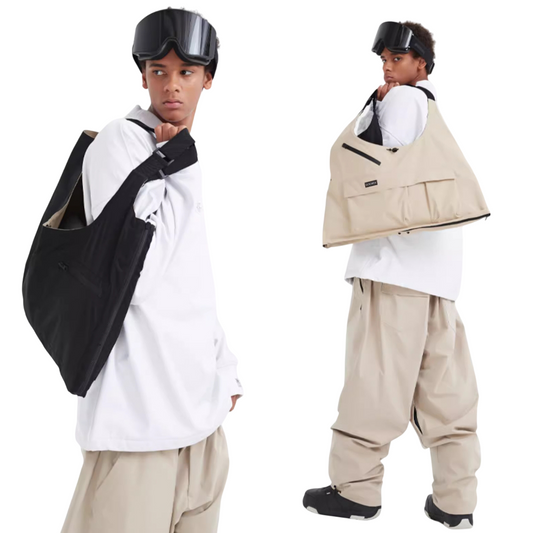Backcountry skiing offers you the thrill of untouched snow and the freedom to explore beyond the resort. To make this adventure accessible, affordable gear like cheap baggy snow pants becomes essential. Options such as The North Face Freedom pants prove that budget-friendly choices can balance cost and performance. In 2025, SNOWMOCACA Ski Pants stand out with their durability and comfort, making them a smart pick for any skier.
Key Takeaways
- Learning about avalanches is very important for staying safe. Take a class to understand dangers and how to help in emergencies.
- Skiing with a group is safer. Share tasks and make sure everyone knows avalanche safety to stay protected.
- Buy strong gear like SNOWMOCACA Ski Pants. They are comfy, work well, and are affordable, great for new skiers.
Safety in Backcountry Skiing
Avalanche education for beginners
Understanding avalanche risks is essential for backcountry skiing. Many accidents occur because skiers fail to recognize the basic signs of avalanche danger. Formal avalanche courses provide you with the skills to assess snowpack stability, identify hazardous terrain, and make safer decisions. A study of AIARE students showed that participants improved their decision-making in avalanche terrain after completing training. These courses teach you how to perform trailhead checks and recognize avalanche-prone areas, which are critical for your safety.
Avalanche safety training also emphasizes the importance of companion rescue. In an emergency, you and your group must act quickly. Statistics reveal that survival chances drop significantly after 10 minutes of burial. Learning how to use a beacon, probe, and shovel effectively can save lives. If you're new to backcountry skiing, consider enrolling in an avalanche rescue course to build your confidence and skills.
Benefits of group travel in the backcountry
Traveling in a group enhances your safety in the backcountry. Groups allow you to share responsibilities, such as navigating, assessing snow conditions, and carrying safety equipment. They also provide additional eyes to spot potential hazards. A survey of 334 participants found that those with avalanche awareness and group travel experience were more likely to carry essential gear and practice safer habits.
Group travel also improves your chances of a successful rescue. If an avalanche occurs, your companions can locate and dig you out faster than professional rescuers. Airbag packs and RECCO reflectors further increase your visibility and survival odds. Always ensure that everyone in your group has completed avalanche safety training and knows how to use their equipment.
Must-have safety gear for backcountry skiing

Carrying the right safety gear is non-negotiable for backcountry skiing. A beacon, probe, and shovel are the foundation of your avalanche safety kit. These tools help you locate and rescue a buried skier quickly. Airbag packs are another valuable addition. They reduce burial depth by keeping you closer to the surface of the debris field, which can shorten rescue times.
A RECCO reflector is a small but powerful tool that enhances your visibility to rescuers using specialized equipment. However, owning safety gear is not enough. You must practice using it regularly to ensure you can respond effectively in an emergency. Remember, safety equipment is only as good as the person using it.
Recent data highlights the importance of proper gear. March and April see the highest backcountry traffic, accounting for 56.3% of usage. Unfortunately, these months also record 55.8% of avalanche incidents. This overlap underscores the need for vigilance and preparation. Equip yourself with the right tools and knowledge to enjoy backcountry skiing safely.
Affordable Gear for Backcountry Skiing
Budget-friendly options for essential gear
Finding affordable backcountry gear can feel overwhelming, but the market has evolved to offer quality options at reasonable prices. You don’t need to break the bank to enjoy backcountry skiing. Many brands now focus on balancing cost and performance, making it easier for you to gear up without overspending.
- Participation in backcountry skiing has surged, with a 65.7% increase in 2024 compared to 49.9% in 2022. This growth has encouraged brands to create more accessible gear.
- TREW Gear’s PNW Originals Collection is a prime example. While not the cheapest, it offers competitive pricing for durable and reliable equipment.
- When choosing gear, consider long-term value. High-quality options may cost more upfront but save you money over time due to fewer repairs and replacements. Durability tests show that premium gear withstands extreme conditions better, reducing maintenance costs. Budget-friendly gear may seem appealing initially, but frequent issues can lead to higher expenses later.
Tip: Prioritize durability and functionality when selecting backcountry gear. A slightly higher initial investment can save you money and frustration in the long run.
Why cheap baggy snow pants are ideal for backcountry skiing
Cheap baggy snow pants have become a favorite among backcountry skiers for their practicality and style. Their loose fit allows for better mobility, which is crucial when navigating uphill terrain or carving through powder. These pants also accommodate layering, keeping you warm without restricting movement.
Baggy snow pants excel in versatility. Whether you’re tackling steep slopes or enjoying a casual snowshoe hike, they adapt to various conditions. Their affordability makes them accessible to beginners who want to try backcountry skiing without committing to expensive gear.
Additionally, baggy snow pants often feature durable materials that resist wear and tear. Reinforced stitching and waterproof fabrics ensure they hold up against harsh weather. You can enjoy your adventure without worrying about your gear failing mid-trip.
Note: Look for pants with adjustable waistbands and cuffs. These features enhance comfort and prevent snow from sneaking in during your backcountry excursions.
SNOWMOCACA Ski Pants: Features, benefits, and FREE SHIPPING on orders over $99
SNOWMOCACA Ski Pants redefine affordable backcountry gear. Designed with durability and comfort in mind, these pants offer features that rival high-end options. Here’s why they stand out:
- Durability: Reinforced knees and seat areas ensure longevity, even in rugged conditions.
- Waterproofing: The DryVent shell fabric keeps moisture out, keeping you dry throughout your adventure.
- Insulation: Advanced insulation provides warmth without adding bulk, allowing for easy movement.
- Lightweight Construction: Perfect for uphill climbs and downhill runs.
- Free Shipping: Orders over $99 qualify for free shipping, making it economical for families and bulk purchases.
Customer reviews highlight the practicality and comfort of SNOWMOCACA Ski Pants. Parents appreciate the free shipping offer, especially when buying for multiple family members. High-quality zippers and reinforced stitching ensure reliability in extreme conditions.
Callout: SNOWMOCACA Ski Pants have high satisfaction rates, with customers praising their durability and timely delivery.
If you’re looking for affordable ski pants that don’t compromise on quality, SNOWMOCACA Ski Pants are an excellent choice. Take advantage of the free shipping offer and gear up for your next backcountry adventure.
Small FAQ:
Q: Are SNOWMOCACA Ski Pants suitable for beginners?
A: Yes, their affordability and practical features make them ideal for beginners exploring backcountry skiing.
Q: How does the free shipping offer work?
A: Orders over $99 qualify for free shipping, making it a great option for bulk purchases or family orders.
Beginner Tips for Backcountry Skiing
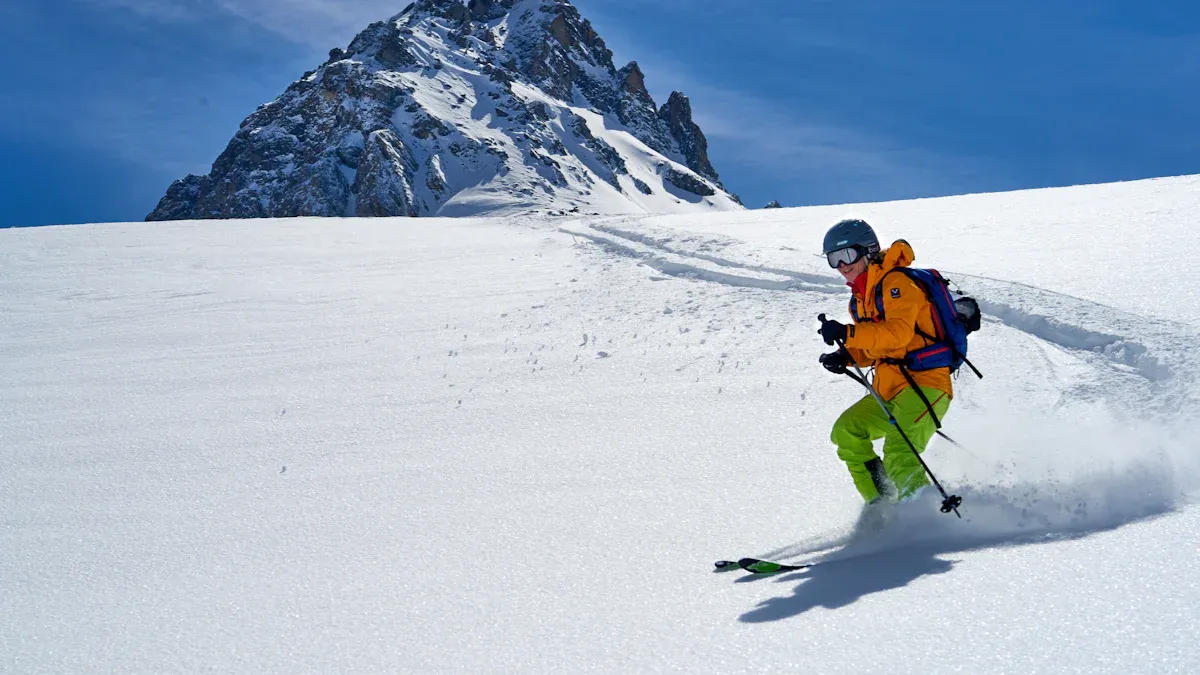
Preparing your fitness for backcountry skiing
Physical preparation is key to enjoying backcountry skiing. You need strength, endurance, and balance to handle uphill climbs, downhill runs, and unpredictable terrain. Start with strength training to build your lower body muscles. Focus on exercises that improve control and balance, such as squats and lunges. Cardio workouts like running or cycling will boost your stamina for long days in the snow.
Strength training can make you more efficient. Numerous studies have shown that improvements in strength correlate with improved running economy which then translates to improved performance. If you get a little stronger, you can move faster and more efficiently.
The goal of strength training is two-fold. First, strength training can make you more efficient. Second, strength training can be another way to prepare your body to tolerate the demands of running, skiing, bootpacking, and skinning.
To prepare effectively:
- Build strength in your lower body.
- Beef up muscles that provide control and balance.
- Increase endurance.
- Crank up your cardio.
Building skiing skills for uphill and downhill techniques
Backcountry skiing requires different techniques from resort skiing. Uphill travel, known as skinning, involves attaching climbing skins to your skis for traction. Practice maintaining a steady pace and using efficient strides to conserve energy. Downhill skiing in the backcountry often involves navigating powder and uneven terrain. Learn to adjust your weight distribution and use wider turns for better control.
Avalanche terrain adds complexity to both uphill and downhill skiing. You must stay alert and assess snow conditions regularly. Take time to practice these skills in controlled environments before venturing into avalanche-prone areas.
Choosing beginner-friendly routes for your first adventure
Selecting the right route can make or break your first backcountry experience. Look for areas with easy navigation and low avalanche risk. Resorts like Ski Cooper and Copper Mountain offer beginner-friendly routes with high success rates.
|
Resort Name |
Difficulty Rating |
Success Rate for Beginners |
Notes |
|---|---|---|---|
|
Ski Cooper |
Easy |
High |
Small resort, easy navigation |
|
Copper Mountain |
Easy |
High |
West village has many beginner runs |
Beginner routes allow you to focus on building confidence and skills without worrying about complex terrain. Always check avalanche forecasts and travel with a group for added safety.
Planning Your Backcountry Skiing Trip
Checking the weather and snow conditions
Before heading into the backcountry, you must check the weather and snow conditions to ensure a safe and enjoyable experience. Snowfall trends vary significantly across regions. For example, areas like Flagstaff, Arizona, have seen declines in annual snowfall, while regions near the Great Lakes, such as Marquette, Michigan, experience increases due to lake effect snow dynamics. These variations highlight the importance of understanding local conditions.
Use reliable sources like the Snow Telemetry (SNOTEL) Network, which monitors temperature, precipitation, and snowpack through over 800 automated data collection sites. This data helps you assess avalanche risks and plan your route effectively. Always prioritize areas with stable snowpack and avoid regions with recent heavy snowfall or rapid temperature changes, as these conditions increase avalanche danger.
Tip: Check avalanche forecasts daily and monitor weather updates from trusted platforms to stay informed about potential hazards.
Packing essentials for safety and comfort
Packing the right gear ensures your backcountry adventure is both safe and comfortable. Start with avalanche safety equipment, including a beacon, probe, and shovel. These tools are essential for locating and rescuing buried skiers. Add an airbag pack to reduce burial depth during an avalanche.
Layering is key for staying warm. Pack moisture-wicking base layers, insulating mid-layers, and waterproof outerwear like SNOWMOCACA Ski Pants. Include gloves, goggles, and a helmet for protection against the elements. Don’t forget snacks and water to maintain energy levels during long trips.
|
Item |
Purpose |
|---|---|
|
Avalanche safety gear |
Rescue and survival |
|
Layered clothing |
Warmth and weather protection |
|
Food and water |
Energy and hydration |
Callout: Double-check your gear before leaving to ensure nothing is missing.
Staying connected with GPS and communication tools
Modern GPS technology enhances safety in the backcountry by providing accurate navigation and peace of mind. Devices like handheld GPS units or smartphone apps help you track your location and avoid avalanche-prone areas. In emergencies, GPS improves response times for rescue teams, which can be life-saving.
Remote device testing ensures these tools perform reliably in harsh conditions. Features like battery life, network connectivity, and GPS sensor accuracy are critical for backcountry skiing. Carry a satellite communication device to stay connected in areas without cell service.
Note: Always test your GPS and communication tools before your trip to ensure they work properly.
Backcountry skiing combines adventure with affordability, making it an exciting way to explore the outdoors. You face challenges that build mastery and satisfaction, creating lasting memories. Affordable gear like SNOWMOCACA Ski Pants ensures accessibility for everyone. Plan carefully, prioritize avalanche safety, and embrace the thrill of untouched snow.
|
Key Findings |
Description |
|---|---|
|
Emotional Experience |
Participants report lower happiness during skiing but remember it positively. |
|
Mastery and Satisfaction |
Challenges faced contribute to a sense of mastery, enhancing overall satisfaction. |
|
Flow State |
Enjoyment is often not consciously experienced during the activity but is reflected upon positively afterward. |
Tip: Backcountry skiing offers a unique flow state. You may not feel the thrill immediately, but the experience will stay with you long after your adventure ends.
FAQ
What is backcountry travel, and how does it differ from resort skiing?
Backcountry travel involves exploring ungroomed, remote areas away from ski resorts. It offers freedom and adventure but requires safety precautions and specialized gear.
Do I need avalanche training before backcountry skiing?
Yes, avalanche training is essential. It teaches you to assess snow conditions, recognize hazards, and perform rescues, ensuring your safety during backcountry adventures.
Are cheap baggy snow pants suitable for extreme weather?
Yes, many affordable baggy snow pants feature durable, waterproof materials. They provide warmth and flexibility, making them ideal for backcountry skiing in harsh conditions.








